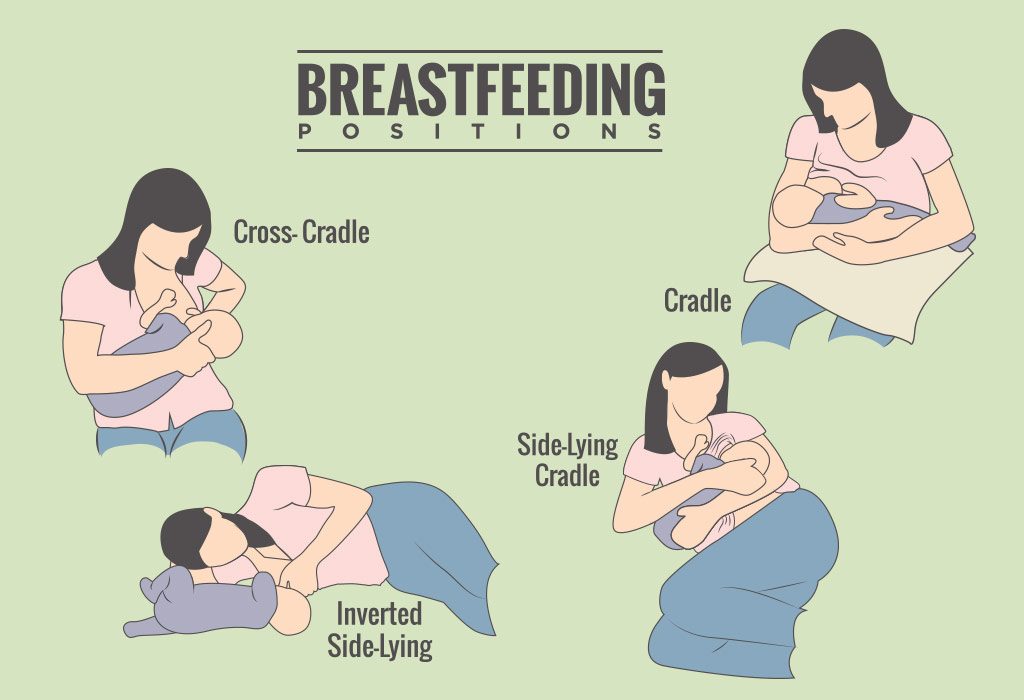Welcome to the third trimester of your pregnancy! This phase, spanning from weeks 27 to 40, brings you closer to the much-anticipated moment of meeting your baby. As you embark on the final leg of this incredible journey, we’ll explore the key aspects of the third trimester, from the physical changes in your body to the baby’s development, and important considerations as you prepare for labor and parenthood.
1. Fetal Development: The Countdown to Birth
During the third trimester, your baby undergoes remarkable growth and development in preparation for life outside the womb. Here are some significant milestones:
- Fetal Viability: At the beginning of the third trimester, the baby reaches a stage of development where, with medical support, they could survive outside the womb. This stage is known as fetal viability.
- Rapid Brain Development: The baby’s brain continues to undergo rapid development, forming intricate connections and preparing for the complex tasks of the outside world.
- Lung Maturation: The lungs produce surfactant, a substance that helps the air sacs inflate and prevents them from collapsing. This maturation is crucial for the baby’s ability to breathe independently.
- Increased Fetal Movement: As the baby grows larger and has less space to move around, their movements may feel stronger and more noticeable.
- Head-Down Position: Many babies settle into a head-down position in preparation for birth. However, some babies may remain in a breech or transverse position, and your healthcare provider will monitor their position as your due date approaches.
2. Physical Changes for the Expectant Mother: A Growing Belly and More
As the baby continues to grow, your body undergoes additional changes to accommodate the increasing size and weight. Some notable physical changes during the third trimester include:
- Expanding Belly: The most visible change is the continued expansion of your belly as the baby gains weight and occupies more space.
- Pelvic Discomfort: The growing baby may exert pressure on your pelvic region, leading to discomfort, backaches, and increased frequency of urination.
- Shortness of Breath: As the baby occupies more space in your abdomen, your diaphragm may be compressed, leading to a feeling of breathlessness.
- Braxton Hicks Contractions: These are practice contractions that may become more noticeable during the third trimester. They help prepare the uterus for labor, but they are usually sporadic and not as intense as true labor contractions.
- Nesting Instinct: Many expectant mothers experience a nesting instinct, a surge of energy and motivation to prepare the home for the baby’s arrival. This may involve organizing, cleaning, and setting up the nursery.
- Swelling: Some women experience swelling in the hands, feet, and ankles, especially towards the end of the third trimester. Elevating your feet, staying hydrated, and avoiding prolonged periods of standing can help alleviate swelling.
3. Pelvic Changes and Preparation for Labor: Bracing for the Big Day
As your body prepares for labor, you may notice specific changes in the pelvic region. These changes are indicators that your body is getting ready for the upcoming birthing process:
- Lightening: In the weeks leading up to labor, the baby may “drop” lower into the pelvis, a phenomenon known as lightening. This can relieve pressure on the diaphragm but may increase pressure on the bladder.
- Cervical Changes: The cervix undergoes changes in preparation for labor. These changes may include effacement (thinning) and dilation (opening). Your healthcare provider will monitor these changes during prenatal checkups.
- Increased Vaginal Discharge: You may notice an increase in vaginal discharge, which can be normal. However, if the discharge is accompanied by itching, a strong odor, or changes in color, it’s essential to inform your healthcare provider.
- Pelvic Pain: As the baby descends into the pelvis, you may experience pelvic pain and pressure. This is a common occurrence as the body readies itself for childbirth.
4. Managing Discomfort and Sleep: Finding Comfort in the Final Weeks
As you navigate the discomforts of the third trimester, it’s important to prioritize self-care and find strategies to enhance your comfort and sleep. Consider the following tips:
- Body Pillows: Using a body pillow can provide support for your belly and help you find a comfortable sleeping position.
- Prenatal Massages: Gentle massages can help alleviate muscle tension and promote relaxation.
- Warm Baths: Soaking in a warm bath can provide relief for sore muscles and promote a sense of calm.
- Comfortable Clothing: Wearing loose and breathable clothing can enhance your comfort, especially as your body undergoes changes.
- Elevate Legs: If you experience swelling, elevating your legs when resting can assist in reducing fluid retention.
- Hydration: Staying well-hydrated is important for overall health, and it can also help with common discomforts.
5. Monitoring Fetal Movements: The Kick Count
During the third trimester, healthcare providers often recommend monitoring fetal movements to ensure the well-being of the baby. This involves counting the number of kicks or movements you feel within a specific timeframe. While patterns of movement vary among babies, a noticeable change in the frequency or intensity of movements should be reported to your healthcare provider.
Regular kick counts, typically done in the evening when the baby tends to be more active, provide reassurance and an opportunity to connect with your baby. If you have concerns about fetal movements, don’t hesitate to contact your healthcare provider promptly.
6. Regular Prenatal Checkups: Monitoring Progress and Addressing Concerns
As you approach your due date, the frequency of prenatal checkups may increase. These checkups are crucial for monitoring the baby’s position, assessing the cervix’s changes, and addressing any concerns or questions you may have. Regular prenatal appointments also allow your healthcare provider to monitor your overall health and well-being.
During these checkups, your healthcare provider may perform:
- Ultrasounds: To assess the baby’s growth, position, and overall well-being.
- Non-Stress Tests: To evaluate the baby’s heart rate in response to movements.
- Pelvic Exams: To check for cervical changes and assess the baby’s position.
These appointments provide an opportunity to discuss your birth plan, ask questions about labor and delivery, and address any anxieties or uncertainties you may be experiencing.
7. Childbirth Classes and Preparation: Knowledge is Empowerment
Taking childbirth education classes during the third trimester can be empowering and informative. These classes cover a range of topics, including:
- Stages of Labor: Understanding the phases of labor and what to expect during each stage.
- Pain Management Techniques: Learning about various pain relief options, from breathing exercises to medications.
- Delivery Positions: Exploring different positions for labor and delivery.
- Postpartum Care: Discussing recovery after childbirth and the early days of parenting.
Childbirth classes provide valuable knowledge and help you and your partner feel more confident and prepared for the birthing experience. Many classes also cover breastfeeding and newborn care.
8. Creating a Birth Plan: Expressing Your Preferences
A birth plan is a document that outlines your preferences and desires for labor and delivery. While it’s important to be flexible, creating a birth plan allows you to communicate your preferences with your healthcare team and ensures that your wishes are considered when possible.
Components of a birth plan may include:
- Pain Management Preferences: Specify your preferences for pain relief, whether it involves natural methods, medications, or a combination.
- Labor Environment: Express your preferences for the labor environment, including music, lighting, and the presence of support persons.
- Delivery Positions: Indicate any specific positions you prefer during delivery.
- Postpartum Wishes: Share your preferences for immediate postpartum care, including skin-to-skin contact and breastfeeding.
- Cord Blood Banking: If you have specific plans for cord blood banking, include this information in your birth plan.
Discuss your birth plan with your healthcare provider to ensure alignment with their practices and to address any questions or concerns they may have.
9. Emotional Preparation: Navigating Anticipation and Anxiety
As you approach your due date, it’s natural to experience a mix of emotions, including excitement, anticipation, and perhaps some anxiety. Preparing emotionally for childbirth and parenthood involves acknowledging and addressing these feelings.
Here are some strategies for emotional preparation:
- Open Communication: Share your thoughts and feelings with your partner, friends, or a support system.
- Educate Yourself: Learn about the birthing process, postpartum recovery, and newborn care to alleviate uncertainties.
- Mindfulness and Relaxation: Practice mindfulness techniques, deep breathing, and relaxation exercises to manage stress and anxiety.
- Connect with Other Expectant Parents: Joining a prenatal or parenting group allows you to connect with others who are experiencing similar emotions and challenges.
- Visualize a Positive Experience: Envision a positive birthing experience and the joy of welcoming your baby.
10. Packing Your Hospital Bag: Essentials for Labor and Recovery
As your due date approaches, it’s a good idea to have a hospital bag packed and ready. While every woman’s preferences are different, here are some common essentials to consider:
- Comfortable Clothing: Loose, comfortable clothing for labor and recovery.
- Toiletries: Personal hygiene items, including a toothbrush, toothpaste, and shampoo.
- Snacks: Energizing snacks for both you and your partner.
- Entertainment: Items to help pass the time during labor, such as books, magazines, or music.
- Birth Plan: A copy of your birth plan to share with your healthcare team.
- Comfort Items: Bring items that bring you comfort, such as a pillow, blanket, or soothing music.
- Going-Home Outfit: A comfortable outfit for you and the baby to wear when leaving the hospital.
Preparing your hospital bag in advance ensures that you’re ready for the big day and helps you focus on the experience rather than last-minute preparations.
Conclusion: Embracing the Final Weeks
In conclusion, the third trimester is a time of anticipation, preparation, and embracing the final weeks of pregnancy. As you navigate the physical changes in your body, monitor fetal movements, and prepare for labor and delivery, remember that each step brings you closer to meeting your precious baby.
Communicate openly with your healthcare provider, stay connected with your support system, and prioritize self-care. Whether you’re experiencing the nesting instinct, attending childbirth classes, or packing your hospital bag, each action contributes to a positive and well-prepared transition into parenthood.
Congratulations on reaching the third trimester, and may the coming weeks be filled with joy, excitement, and anticipation of the beautiful journey ahead. Wishing you a smooth and empowering birthing experience as you welcome your little one into the world.










